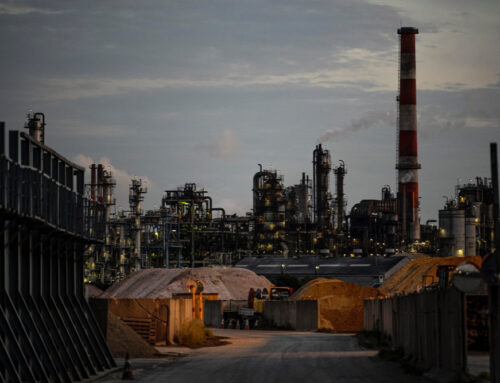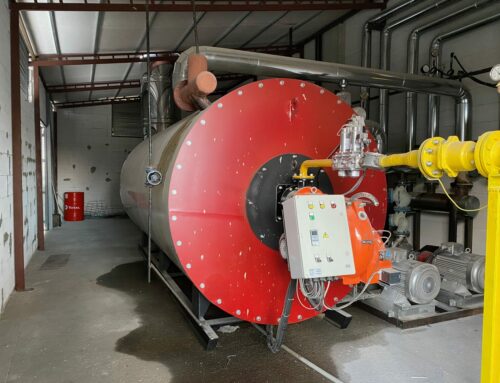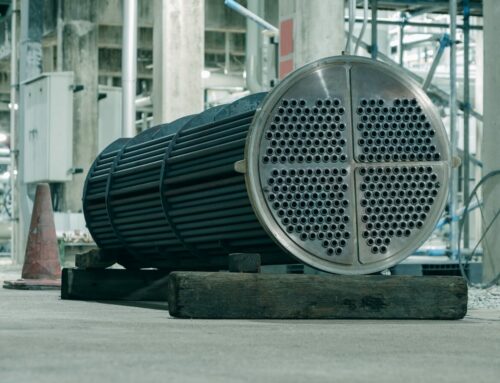
The Steel manufacturing company or industry is an important sector in which steel is subjected to various processes and used in different industries. These products, which are very important in the field of industry, also have a great impact on the climate. Since steel manufacturers are a part of life, it is responsible for a large proportion of global emissions.
The fact that steel manufacturers are material used in every field increases the demand for this product. Thus, the sustainability of these products is increased and they are used in a durable way for a long time. However, when steel is produced, harmful gasses that affect nature are emitted. Efforts to reduce these emissions are important for climate change and the damage is minimized.
Recycling processes are one of the most important efforts to reduce emissions. Thanks to recycling, steel collected through scrap is made usable again by processing with less energy. The electrolysis method is also considered one of the important studies that protect the climate factor. Despite the high cost and high energy use, it prevents climate change problems.
Definition of Steel
Steel is a combination of carbon and iron alloys. Steels contain small amounts of aluminum, silicon, phosphorus, and carbon. The combination of these elements gives steel hardness and strength.
Steels that are highly sensitive to heat treatment are used in many industrial sectors. Rolling or pressing is possible by applying heat to the steel so that it can be easily shaped.
Steel is also divided as follows in terms of classification:
– Production program, area of use, deoxidation status
– According to the shape of the product
– According to recently produced methods
– According to the usual production methods
– According to alloy steel and carbon composition when an overview of the steel sector is made, it can be easily realized how important a substance it is. The need for this product in all kinds of industrial fields makes steel valuable. Durable and long-lasting steels are also suitable for shaping and coating.
How Much Do the Steel Manufacturers Contribute to Climate Change?
Steel has many common uses. The high number of these areas of use greatly increases the need for steel. There are many sustainability studies on the high demand for steel.
According to these studies, it is ensured that steel can be reused by going through recycling stages. Recycling is very effective in minimizing the damage left by steel to nature. Emission effects are greatly reduced by recycling.
Producing steel by recycling reduces the emission of companies and enables them to use less energy. In summary, processing recycled steel instead of new steel production uses 56% less energy on average.
Directly using reduced iron reduces emissions significantly. However, it is generally not preferred due to the high cost for companies. However, these technologies must advance. With these emission reduction efforts, carbon purification takes place. Both sustainable steel use and a positive impact on the climate are ensured.
How is Steel Made?
Steels are one of the most commonly used metal products. Thanks to developing technology, the steel industry makes steel usable in every field. So how is steel made? A blast furnace and electric arc furnace are needed to make steel. In these areas, iron ore is heated by adding carbon and exposed to the melting process. After melting, various types of metal, known as alloys, are added to the steel. It is then shaped according to demand or left in its pure form.
Iron and carbon combine to make steel. Carbon hardens the iron and this combination results in strong steel. However, the carbon ratio should be used carefully and correctly. As a result of over or under-use, the fragility rate of steel increases. In steels to be used in different areas, element ratios can be changed according to some criteria.
Countries with the Largest Share in Steel Production
China has the largest number of steel production companies in the world. China ranks first in iron and steel manufacturing companies. China is followed by the USA, Russia, Germany, Japan, and South Korea. These countries are the largest exporters of iron and have the largest number of steel manufacturing companies. Germany is known as the country that imports the most in the steel sector.
Turkey has shown a significant increase in steel manufacturing in recent years. It is known as the world’s 7th largest steel producer. However, China realizes a production equal to the total steel produced all over the world. This significant ratio makes China the leader in steel production.
What can be done to reduce emissions?
Reducing emissions plays a major role in preventing global climate change. By using emission reduction methods, the future of the climate can be protected. Thus, the rate of global warming is minimized. So how to reduce emissions?
– Public transportation and bicycle use can be increased instead of using personal vehicles.
– Electric heating systems can be preferred instead of natural gas consumption in homes and many areas.
– The spread of fossil fuels can be prevented.
– Harmful energy sources such as coal power plants can be replaced.
Recycling
Recycling is an important and valuable form of production that enables waste materials to be reproduced and reused through various methods. This method, which ensures the protection of nature, also secures resources to a great extent. At the same time, recycling saves a great deal of money. Since less material will be consumed, both consumption and production are positively affected.
Recycling processes have a great place and importance in the steel industry. Less energy is used with the recycling of steel. Thus, the steel industry is developed. As a result of recycling steel, fewer carbon emissions are realized. Thus, an important step is taken to prevent climate change problems.
Reduced Iron
Reduced iron is the direct conversion of iron ore into a usable form. The iron pellet is filled into the reduction unit in the furnace. Shaping is done with gas reaching approximately 800 to 870 degrees Celsius.
One of the most common uses of directly reduced iron in electric furnaces is in the production of raw iron or steel. In summary, instead of using sponge iron, up to 50% scrap iron can be used. Thus, scrap iron is a good alternative to good sponge iron.
By using these methods, steelmaking companies and steel producers can save on raw materials. At the same time, the procurement process is greatly simplified. By using reduced iron, waste is greatly reduced. In this way, productivity is also increased.
Electrolysis.
Electrolysis is a method of separating chemicals dissolved in liquid with the help of electricity. This separation process must be carried out in an electrolysis vessel or tank. In this container, plus and minus charged ions consist of two electrodes that do not touch each other. After these electrodes are connected to the current source, voltage is provided. Thus, oppositely charged movement takes place.
Electrolysis is commonly used to separate metals. At the same time, electrolysis is also used in the coating process. Its use for these purposes facilitates the work of the sectors.
Among the sectors where the use of electrolysis is most common is the textile and chemical industry. The low cost of the electrolysis process allows it to be used in every sector according to need. Many products that are frequently used in daily life have undergone the electrolysis process.
At Sanarise Industrial, we are deeply committed to minimizing our environmental impact and making our manufacturing processes as eco-friendly as possible. We prioritize the use of sustainable practices, including recycling, reduced iron, and advancements in electrolysis, to minimize emissions and protect the environment. By choosing Sanarise, you can trust that our dedication to excellence goes hand in hand with our responsibility towards the planet, ensuring a greener future for generations to come.





Leave A Comment